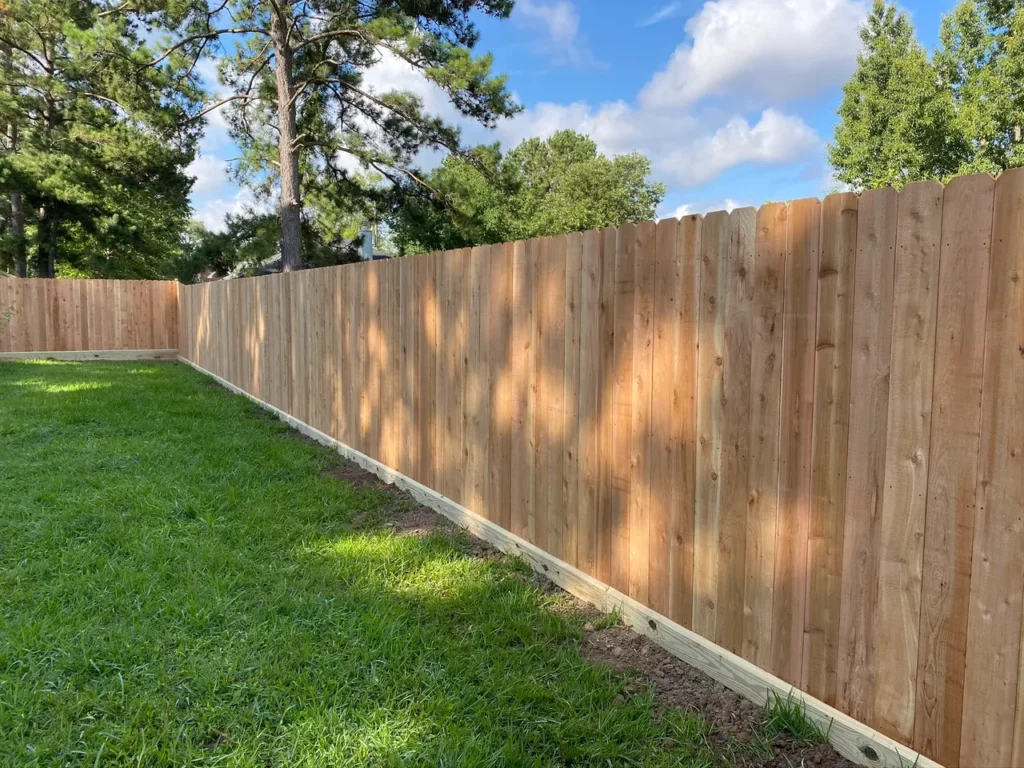In the realm of fence installation, homeowners are presented with a spectrum of options ranging from the timeless elegance of classic wood to the durability and low maintenance of modern vinyl. Each material comes with its own set of technical specifications and advantages, such as the natural resistance of cedar to rot and insects or the superior weather resistance of vinyl. Understanding these characteristics is crucial for making an informed decision that aligns with both aesthetic preferences and functional requirements. As we explore these materials further, the considerations and innovations in fencestechnology present intriguing prospects for any property owner.
Classic Wood Fence Options
When considering classic wood fencing options for your home, several styles stand out for their durability and aesthetic appeal.
Picket fences, characterized by evenly spaced vertical boards, offer a traditional look that enhances curb appeal.
Privacy fences, typically composed of tall, closely placed panels, provide seclusion and noise reduction, making them ideal for urban settings.
Split rail fences, with their rustic charm, function well for marking boundaries in rural areas.
Selecting the appropriate wood species is crucial; cedar and redwood are renowned for their resistance to decay and insects, while pressure-treated pine offers cost-effective longevity.
Maintenance considerations include periodic staining or sealing to protect against weathering.
Modern Vinyl Fencing Choices
Offering a blend of durability and low maintenance, modern vinyl fencing presents an attractive alternative to traditional wood options. Engineered with high-grade polyvinyl chloride (PVC), these fences resist rot, insects, and fading, ensuring long-term investment value. Homeowners seeking modern aesthetics will appreciate the diverse range of colors and textures that align with contemporary design trends. Installation is straightforward, with interlocking panels reducing labor time and costs. Vinyl fencing offers a sense of community belonging through its environmentally friendly construction and recyclability.
- Durability: Resistant to warping, cracking, and extreme weather.
- Maintenance: Requires only occasional cleaning with soap and water.
- Aesthetic Variety: Available in multiple styles, including picket, privacy, and semi-privacy.
- Cost-Effective: Lower long-term maintenance costs compared to wood.
- Sustainability: Manufactured from recyclable materials, supporting eco-friendly initiatives.
Conclusion
In the realm of perimeter enhancement, the juxtaposition of classic wood and modern vinyl fencing epitomizes a comical duel between tradition and innovation. The former, armed with cedar and redwood, valiantly battles decay and insects, while the latter, clad in eco-friendly armor, dismisses warping and weather woes. As homeowners navigate this paradoxical battleground, the decision becomes an exercise in selecting either the noble antiquity of timber or the futuristic resilience of synthetic materials, each promising its own version of domestic fortification in Fence.
Read More:
Top Benefits of Installing a Fence: Privacy, Security, and Style

